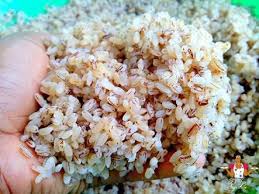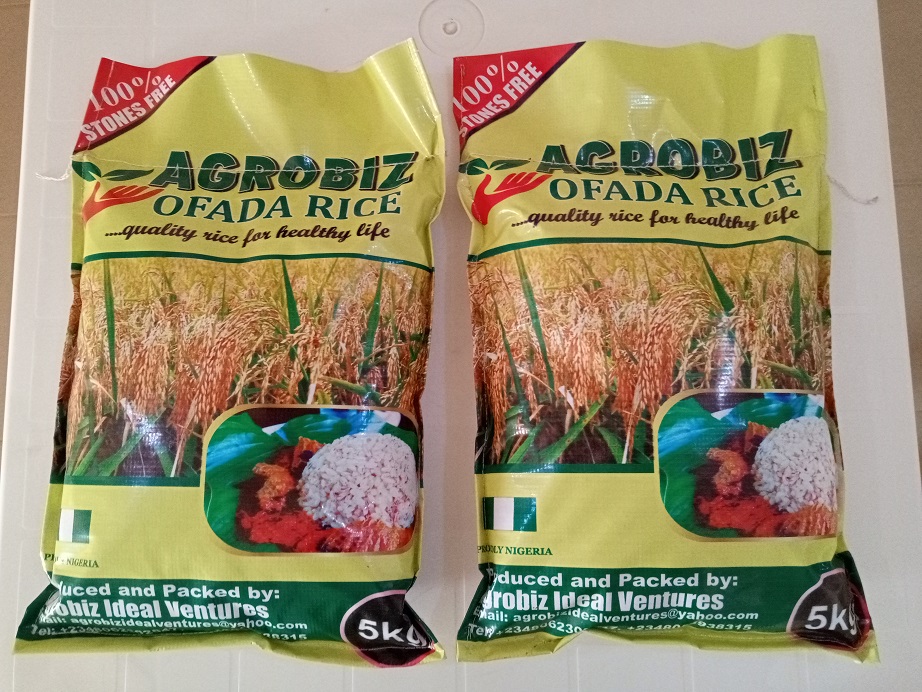HISTORY AND CULTURAL SIGNIFICANCE OF OFADA RICE
Eating good food is an essential part of the Yoruba culture. It represents friendliness and social standing. Eating good and nutritious food supports and helps to strengthen family bonds. Good food is regarded as a fundamental need of man as well as a connection to their origin. Early on, preferences are formed based on societal norms regarding what is acceptable and excellent to consume. Food serves as a continual reminder of one’s identity and origins for the Yoruba, from Gbegiri and Amala to Ijebu garri and even Ofada rice.
 Ofada Rice
Ofada Rice
Ofada rice is a locally cultivated rice throughout the southwestern part of Nigeria, just like the Abakiliki and Anambra rice grown in some regions of South-Eastern Nigeria. The name of this rice comes from Ofada, a tiny hamlet in Ogun State’s Obafemi Owode Local Government Area where it was initially grown. It is believed that ofada rice was introduced by soldiers returning from World War One. This rice is said to have been initially cultivated around 1940.
Upland rice called ofada is cultivated on free-draining soil, where the water table is permanently below the roots of the rice plant. The rice can be differentiated from other types of rice by the presence of burgundy stripes, it is also short and rich in minerals. Chemicals are not used in planting ofada rice. After harvest, it is let to soak in water for five to seven days before being parboiled, sun-dried, and sold or kept for family use in an airtight container. This rice is more nutritious than white rice since it isn’t polished. It is said to have twice as much fibre as white rice, because of this, it is perfect for individuals who are health conscious. However, the presence of stones in Ofada rice, like with other varieties of indigenous rice, is a big turn-off while cooking it. Care must be used when removing the stone from the rice. If the stones are not removed well, it will result in an unpleasant rice dish with stones scattered all over it.
Ofada rice is unquestionably one of those nutrient-dense foods with a host of health advantages. However, it doesn’t belong to the group of meals with a pleasant scent. It may be rather nasty, disgusting, or insulting, as some people say. This local delicacy has a distinct aroma that has been compared to that of a he-goat, especially when it is being cooked. Thankfully, the flavour is different after it is cooked. If anything, it has a great flavour, especially when mixed with the Ayamase sauce, which is the local signature.
Most times ofada rice is eaten as white parboiled rice. Although this cuisine has a distinctive scent, it is not the most appetizing dish at the buffet. Ayamase sauce is the ideal sauce for this rice. Traditionally, this food is eaten on a plate covered with Uma leaves.
Local (ofada) rice is frequently more expensive than other varieties of rice that are readily available, and some customers have come to view it as a status symbol. Due to the labour-intensive nature of the preparation, local (ofada) rice was traditionally seen to be appropriate for serving during holidays and on special occasions like weddings and birthday parties. Due to significant advancements in processing technology, it is now a staple diet for the majority of Nigerians, particularly in the southwest of the country. Local (ofada) rice is typically served with a sauce of Ata Rodo (hot) and tatase (sweet) pepper, onion, locust beans, palm oil, and various types of meat in a Uma leaf (Thaumatococcus danielli). It is frequently eaten with Obe-ata-iru or Ayamase, two dishes made specifically for ofada rice consumption, as well as a vegetable stew that may incorporate locust beans as an ingredient. The way local (ofada) rice is prepared, and served can be linked to its indigenousness, which links individuals to their cultural background and dietary habits.
OFADA RICE’S PHYSICAL CHARACTERISTICS
A mix of quantifiable and desired properties defines the physical quality of milled rice. These are employed to categorize rice into grades, which differ for different nations, following market demands. The preferences of the purchasers determine the rice grades. The primary physical qualities that affect rice quality are size (length, width, and breadth), colour (whiteness), milling degrees, head rice, damaged grain, and chalkiness. The size, shape, look, and colour of the grain are used by consumers to assess the quality of rice. Nigerian rice is not competitive with foreign rice mostly due to its low physical quality.
Ofada rice is typically thought of as having short grains, although specific processing factors may cause them to change to medium or long grains. Short grain, strong, and striped with brown, the original Ofada rice is said to be a cross between the ITA 150 and OS6 kinds. Ofada rice is comparable to the well-liked basmati rice from Pakistan and India. According to experts, it is unpolished short-grain rice with red kernels that is unrelated to any other rice grown in Nigeria. The upland variety FARO 3, also known as Agbede, was the first variety of Ofada rice to be introduced. It was followed by OS 6, which was sold as FARO.
Ofada funfun (white ofada) and ofada pupa(brown of ad a) are the two different varieties of ofada rice, and their differences may be seen in their colours. (brown ofada). Similar amounts of calories and carbs are found in both brown rice and white rice. White rice has different nutritional values because the bran and germ have been removed. Only the outermost coating of a grain of rice (the husk) is removed, making brown rice a complete grain.
Because the bran and germ are present, it has the same carbohydrate level as white rice while also being an excellent source of magnesium, phosphorus, selenium, thiamine, niacin, vitamin B6, and manganese.
The bran layer and germ, which are the following layers below the husk during the manufacturing of white rice, are removed, leaving largely the starchy endosperm. This removal and the following polishing procedure result in the loss of several vitamins and dietary minerals.
Conclusion
Ofada rice is a dish that has a lot of historical and folkloric tales attached to it. You may easily stroll into any restaurant and treat yourself to a dinner of ofada rice and stew. It was formerly only common among the Yoruba many years ago but is now available to everyone.
 HISTORY AND CULTURAL SIGNIFICANCE OF OFADA RICE
HISTORY AND CULTURAL SIGNIFICANCE OF OFADA RICE
To buy your Original destoned Ofada Rice and have it delivered to you any where in Nigeria Call or whatsapp 0806077920
Price: N6000 for 5kg– you can only request for a minimum of 10 packs and above.
N55,000 for 50kg
Office for pick up: No 17, community Avenue, ilupeju Magboro, beside Tallmania Hotel, Lagos-Ibadan express way.
Call/WhatsApp 08060779290
Read Also 5 Easy and delicious Ofada rice recipes to try at home
Related